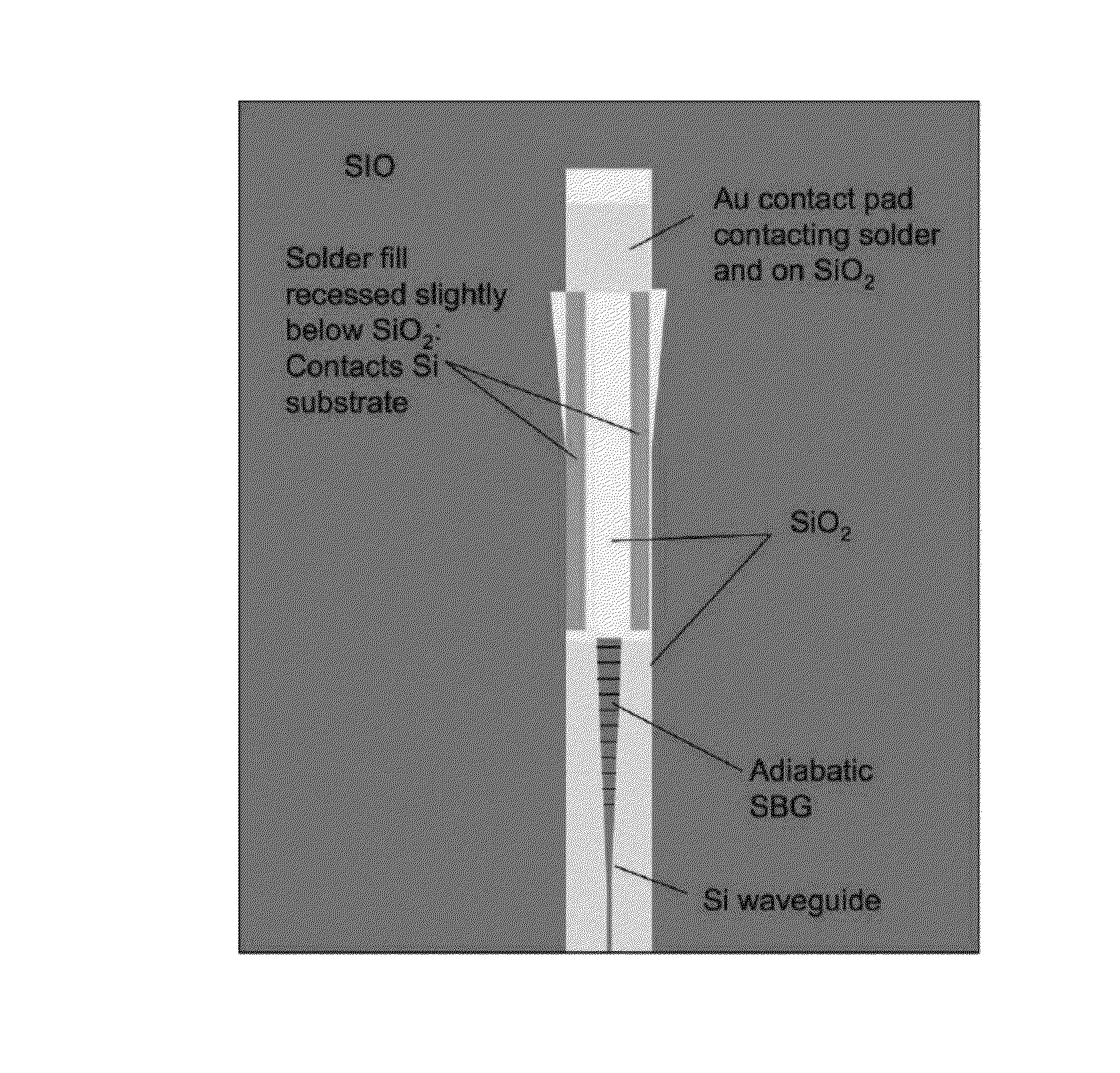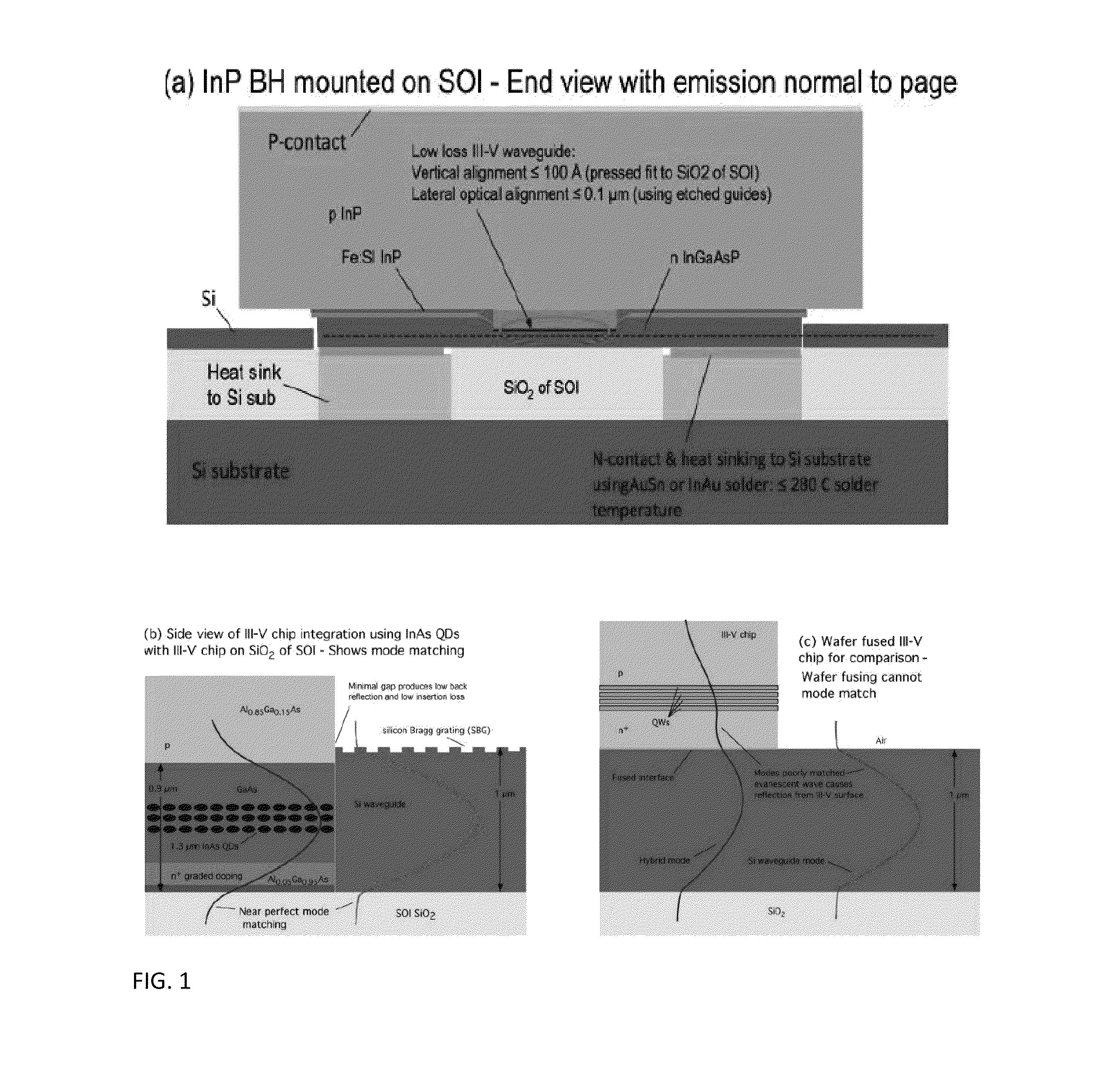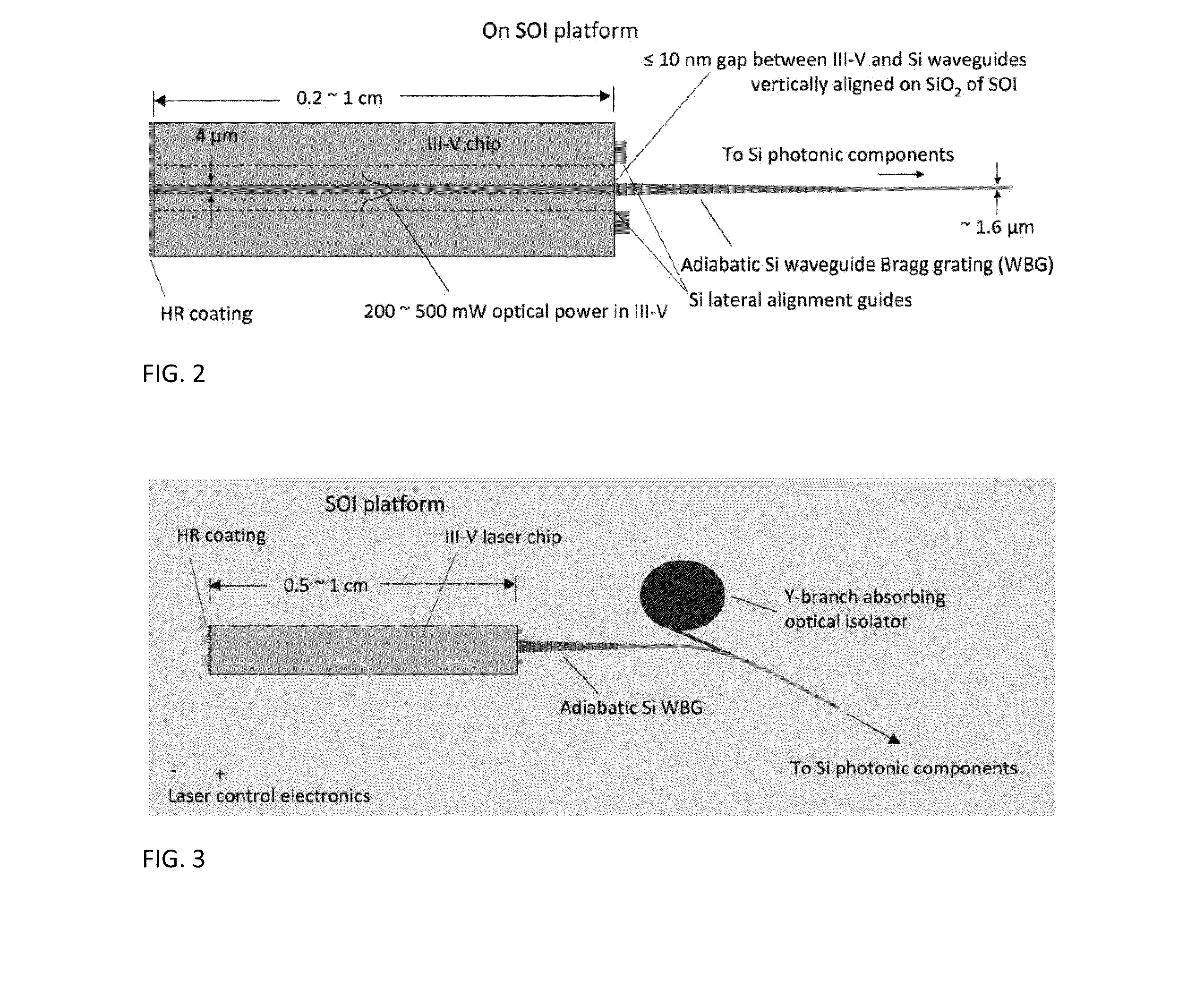Branched shape optical isolator and optical apparatus, method and applications
a technology of optical isolators and optical components, applied in the field of optical devices, can solve the problems of difficult realization of similar components, noise problems, and the apparatus of lasers are not entirely without problems, and achieve the effects of efficient heat sinking, efficient coupling, and efficient heat sinking
- Summary
- Abstract
- Description
- Claims
- Application Information
AI Technical Summary
Benefits of technology
Problems solved by technology
Method used
Image
Examples
first embodiment
[0035]FIG. 12a and FIG. 12b show two schematic diagrams illustrating two embodiments of a branched optical isolator in accordance with the embodiments. In a first embodiment as illustrated in FIG. 12a, there is illustrated the branched optical isolator embodiment that includes an upper optically absorbing section and an upper optically transmitting waveguide section that are joined at a midpoint of the branched optical isolator and lead through the bottom optically transmitting waveguide section of the branched optical isolator to additional circuitry as indicated by the arrow at the bottom of the branched optical isolator. Within the schematic diagram of FIG. 12a, and although not illustrated, an optical chip (i.e., in particular a laser chip) is intended as attached to the distal left hand end of the optically transparent waveguide section. Within the schematic diagram of FIG. 12a, and as is illustrated, the optically absorbing section terminates in a nodal portion to which is tan...
second embodiment
[0040]Within the branched optical isolator in accordance with the embodiments as illustrated in FIG. 12b, there is added a gap interposed between the optically transparent upper waveguide section and the optically transparent lower waveguide section. The gap has a width from about 0.0001 to about 1 microns. The gap can provide greater isolation while also providing efficient coupling into the optical transmitting section.
[0041]FIG. 13 on the left shows a straight lossless waveguide with a confined mode propagating down the guide. The Poynting vector points along the normal to the guide giving the direction of energy flow. On the right is shown the propagation for the same guide filled partly with loss material. The result is that the Poynting vector is directed towards the lossy region. The reason is that the energy flow is into the loss region due to absorption, and this is shown by the tilt in the Poynting vector. If the direction were reversed the Poynting vector would again be p...
PUM
 Login to View More
Login to View More Abstract
Description
Claims
Application Information
 Login to View More
Login to View More - R&D
- Intellectual Property
- Life Sciences
- Materials
- Tech Scout
- Unparalleled Data Quality
- Higher Quality Content
- 60% Fewer Hallucinations
Browse by: Latest US Patents, China's latest patents, Technical Efficacy Thesaurus, Application Domain, Technology Topic, Popular Technical Reports.
© 2025 PatSnap. All rights reserved.Legal|Privacy policy|Modern Slavery Act Transparency Statement|Sitemap|About US| Contact US: help@patsnap.com



